Birds in Central Java are a major attraction for birdwatchers and naturalists from around the world. The region is home to a wide variety of bird species that live in a variety of habitats, from lowland rainforests to highland mountains.
Central Java has a diverse array of birdlife, with many species endemic to the region. The region is also a major stopover point for birds migrating in the region since the area is on the edge of the East Asian-Australasian Flyway.
The area is also home to several conservation efforts, including the Java Bird Park, which is dedicated to preserving and protecting the birds of Central Java.
1. Java Sparrow
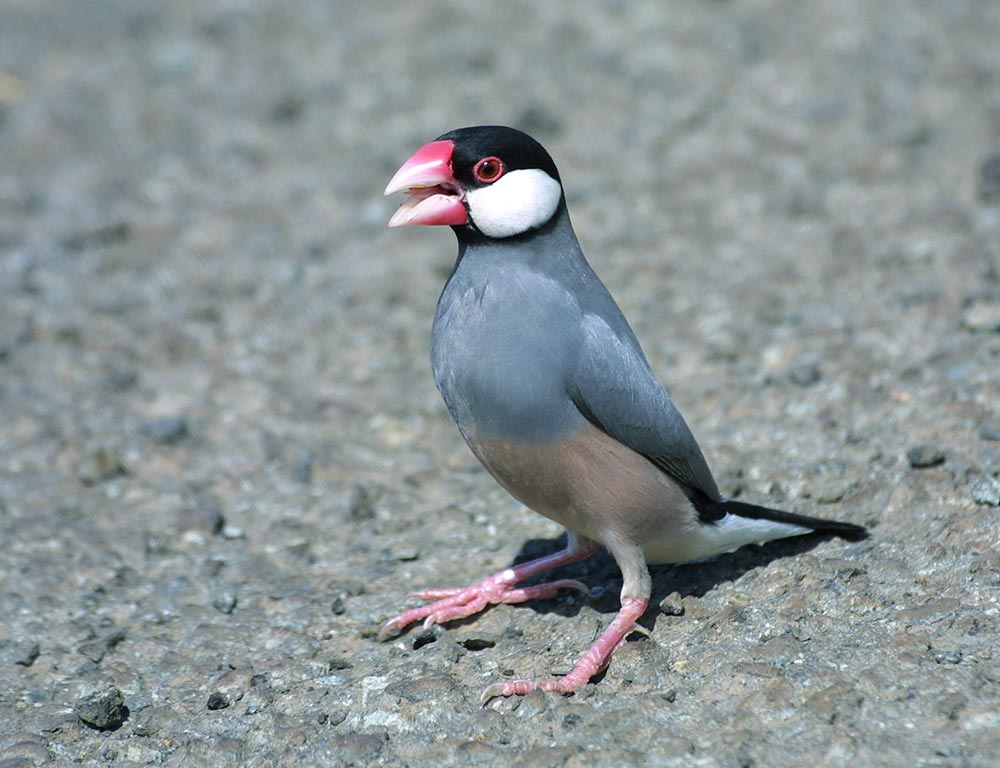
The Java sparrow, also known as the Java finch, Java rice sparrow, or Java rice bird, is a small passerine bird found in Indonesia.
This estrildid finch is primarily a resident breeding species in Java, Bali, and Bawean, though it has been introduced in many other countries as well.
It is a popular bird for keeping in cages, due to its attractive appearance and cheerful song. The Java sparrow has a distinctive appearance, with a mostly gray body, black head, and white patches on its wings and tail. Its bill is also black, and its eyes are dark brown.
Males and females have similar plumage, however, the male has a slightly larger bill than the female. The Java sparrow is a seed-eating bird, preferring to feed on millet, canary grass, and other small seeds. It is also known to eat small insects, such as aphids and caterpillars.
It forages in flocks, often mixing with other sparrow species. The Java sparrow is quite social, and forms pairs during the breeding season. The female typically builds the nest, which is usually a cup-shaped structure constructed of grass and other plant material.
The male helps with the incubation and feeding of the young. The pair will aggressively defend their breeding territory against intruders. The Java sparrow is a relatively hardy species and can survive in urban and suburban habitats as well as more natural environments.
It has been introduced to many countries, however, it is not considered an invasive species. It is an important agricultural pest in some areas, however, as it can cause significant damage to grain crops.
| Kingdom | Animalia |
| Phylum | Chordata |
| Class | Aves |
| Order | Passeriformes |
| Family | Estrildidae |
| Genus | Padda |
| Species | P. oryzivora |
2. Javan Hawk-eagle
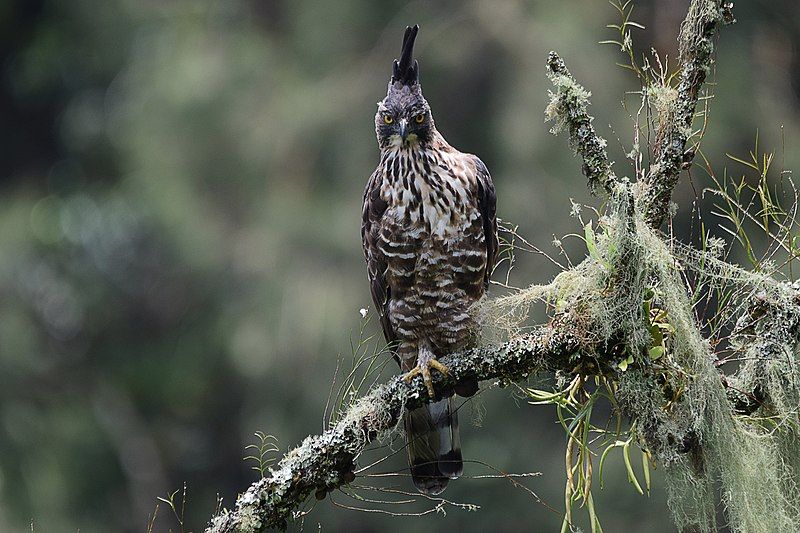
The Javan Hawk-eagle is a species of bird found in Indonesia. It is a medium-sized raptor, with dark brown plumage. It is part of the Accipitridae family, which includes hawks, eagles, and other birds of prey.
The Javan Hawk-eagle is also the national bird of Indonesia, and it is referred to as Garuda in local mythology. The scientific name of the Javan Hawk-eagle is a tribute to the Bartels family, who discovered the species.
The Javan Hawk-eagle is a powerful bird of prey that is found in Indonesia. It has a wingspan of up to 75 cm and can weigh up to 1.5 kg. It has a dark brown plumage with lighter brown and white markings. The bird has a distinctive white-tipped tail and yellow legs and feet.
It feeds mainly on small mammals, birds, and reptiles. The Javan Hawk-eagle is also the national bird of Indonesia, and it is revered in local myths and legends.
The bird is known as Garuda in Hindu and Buddhist mythology, where it is portrayed as a bird-like creature that is capable of great feats of strength and speed.
The scientific name of the Javan Hawk-eagle is a tribute to the Bartels family, who discovered the species in the early 1900s. The Javan Hawk-eagle is an important species in Indonesia, both culturally and ecologically.
It is a symbol of national pride and its presence is a reminder of the importance of protecting and preserving the natural environment. The species is also an important part of the local food chain, helping to regulate populations of small animals and birds.
| Kingdom | Animalia |
| Phylum | Chordata |
| Class | Aves |
| Order | Accipitriformes |
| Family | Accipitridae |
| Genus | Nisaetus |
| Species | N. bartelsi |
3. Brown-throated Barbet
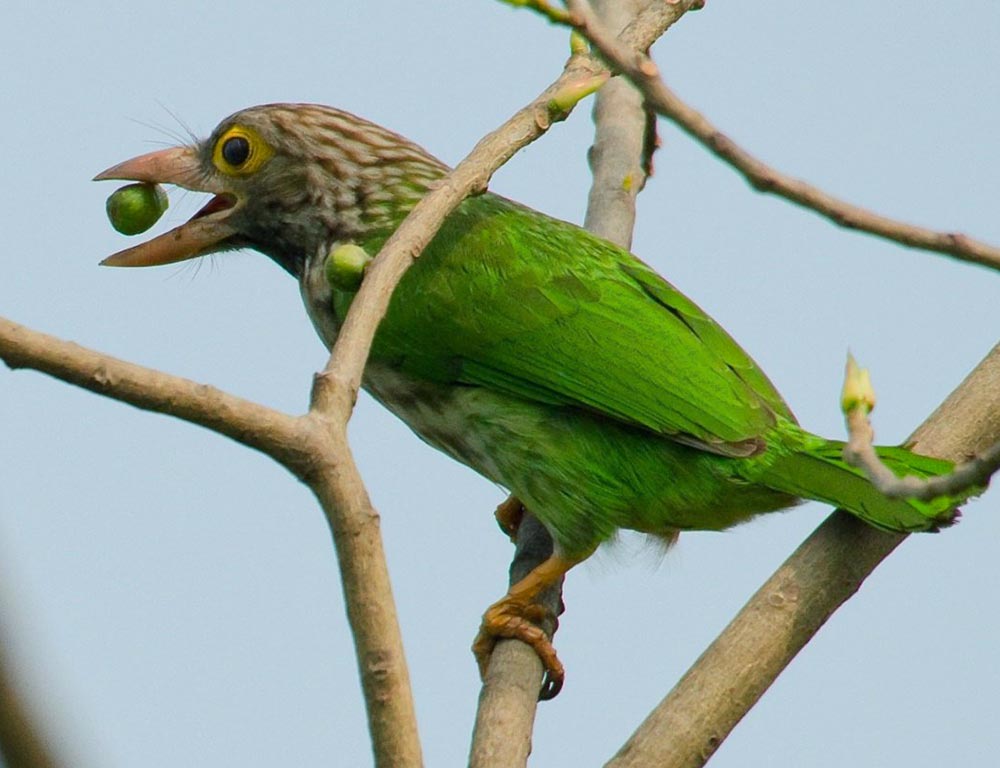
The brown-throated barbet is a species of bird found in a family known as Megalaimidae. It is found only in western Java, meaning it does not exist anywhere else on the planet.
Its preferred habitats are subtropical or tropical moist lowland forests, as well as subtropical or tropical moist montane forests. This means that it enjoys living in areas that are either humid and low-lying, or humid and mountainous.
These types of forests provide a great deal of food, shelter, and nesting places for the barbet, helping to ensure its survival. The brown-throated barbet is an important species of bird, and its existence in these natural habitats is essential to the local ecosystems.
| Kingdom | Animalia |
| Phylum | Chordata |
| Class | Aves |
| Order | Piciformes |
| Family | Megalaimidae |
| Genus | Psilopogon |
| Species | P. corvinus |
4. Black-Banded Barbet
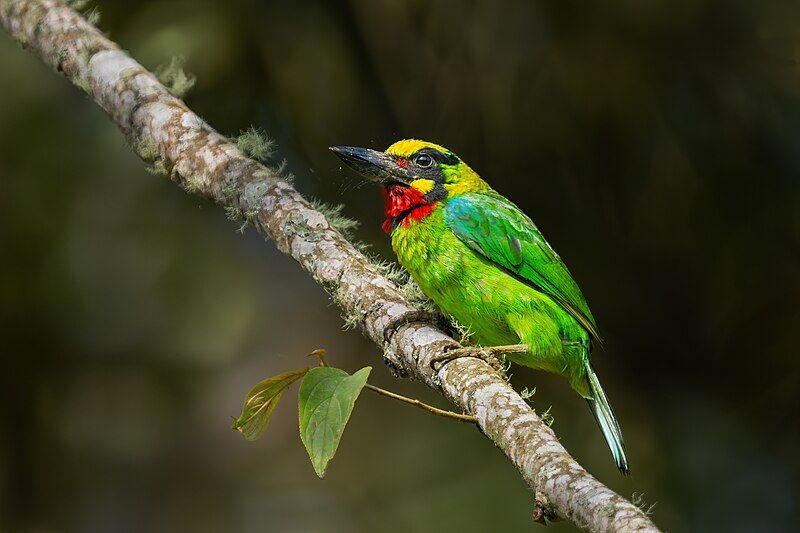
The black-banded barbet is a species of bird found in the Megalaimidae family. It is an endemic species, meaning that it is found only in two places, Java and Bali.
Its natural habitats are two types of forests: subtropical or tropical moist lowland forests, and subtropical or tropical moist montane forests.
Unfortunately, these habitats are threatened by human activity such as deforestation, which is putting the black-banded barbet at risk of extinction. As a result, the species is now classified as “threatened” according to the IUCN Red List of Threatened Species.
Conservation efforts are needed to protect the black-banded barbet and its habitats, as well as other species that rely on the same type of environment.
| Kingdom | Animalia |
| Phylum | Chordata |
| Class | Aves |
| Order | Piciformes |
| Family | Megalaimidae |
| Genus | Psilopogon |
| Species | P. javensis |
5. Green Junglefowl
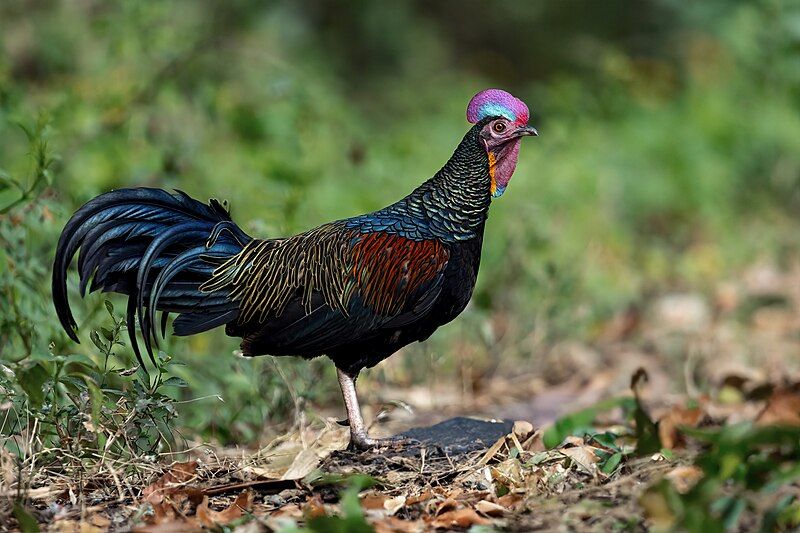
The green junglefowl, also known as Javan junglefowl, forktail, or green Javanese junglefowl, is a species of bird that is closely related to the domestic chicken. It is believed to have diverged from other species of the junglefowl family at least four million years ago.
This makes it the oldest and most distantly related of the four species of junglefowl.
Additionally, hybridization with domestic chickens has been reported, providing further evidence of their close genetic and evolutionary relationship. The green junglefowl is native to the island of Java and is a small bird, about the size of a bantam chicken.
Its plumage is predominantly green with some black, white, and red markings. While the species is not currently threatened, it is believed to have declined in population due to hunting and habitat destruction.
As such, conservation efforts are being made to protect the green junglefowl and preserve its genetic diversity.
| Kingdom | Animalia |
| Phylum | Chordata |
| Class | Aves |
| Order | Galliformes |
| Family | Phasianidae |
| Genus | Gallus |
| Species | G. varius |
6. Bar-winged Prinia
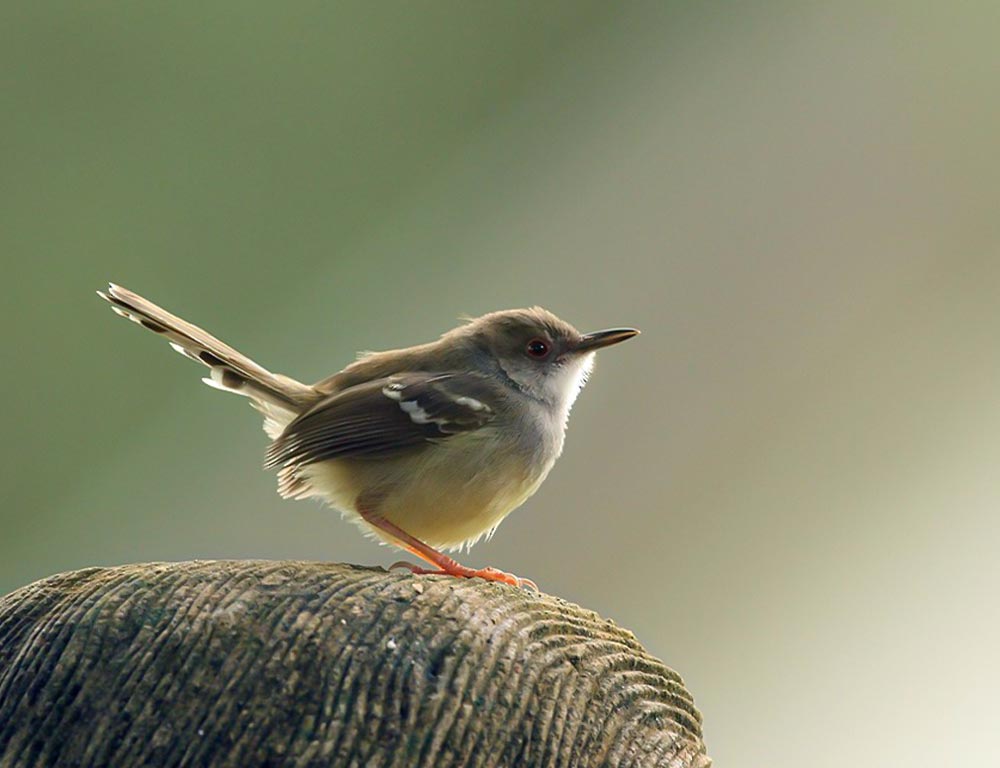
The bar-winged prinia is a species of small bird belonging to the family Cisticolidae. It is a species native to India and Sri Lanka, where it can be found in areas of open scrub and grassland.
This species, also known as the bar-winged wren-warbler, is a small brown bird with a light grey head and chest. Its wings are barred with black and white markings, and its tail is reddish-brown. It has a distinctive song, which is a mixture of whistles and trills.
The bar-winged prinia is a mainly insectivorous species, feeding on insects such as grasshoppers and caterpillars. It also eats seeds and some fruit. It nests in low shrubs, laying 3-4 eggs in a cup-shaped nest.
The bar-winged prinia is a fairly common species, although its population is decreasing due to habitat destruction. It is listed as Near Threatened by the IUCN.
| Kingdom | Animalia |
| Phylum | Chordata |
| Class | Aves |
| Order | Passeriformes |
| Family | Cisticolidae |
| Genus | Prinia |
| Species | P. familiaris |
7. Sumatran Green Pigeon
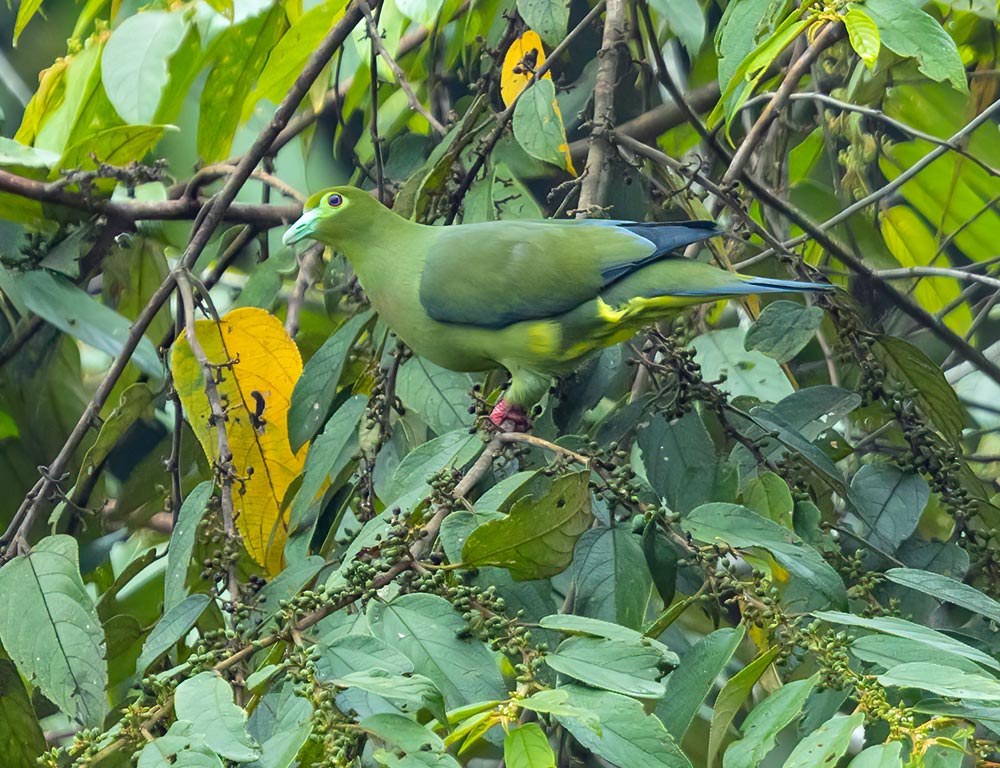
The Sumatran green pigeon is a species of bird in the family Columbidae and is endemic to Indonesia. This means that it is found nowhere else in the world and is only found in Sumatra and western Java.
The pigeon’s natural habitats include subtropical or tropical moist lowland forests and subtropical or tropical moist montane forests. Unfortunately, these habitats are being threatened by human activities, which is causing habitat loss and putting the species at risk.
Therefore, conservation efforts must be made to protect the Sumatran green pigeon and the habitats it depends on for survival.
| Kingdom | Animalia |
| Phylum | Chordata |
| Class | Aves |
| Order | Columbiformes |
| Family | Columbidae |
| Genus | Treron |
| Species | T. oxyurus |
8. Green Peafowl
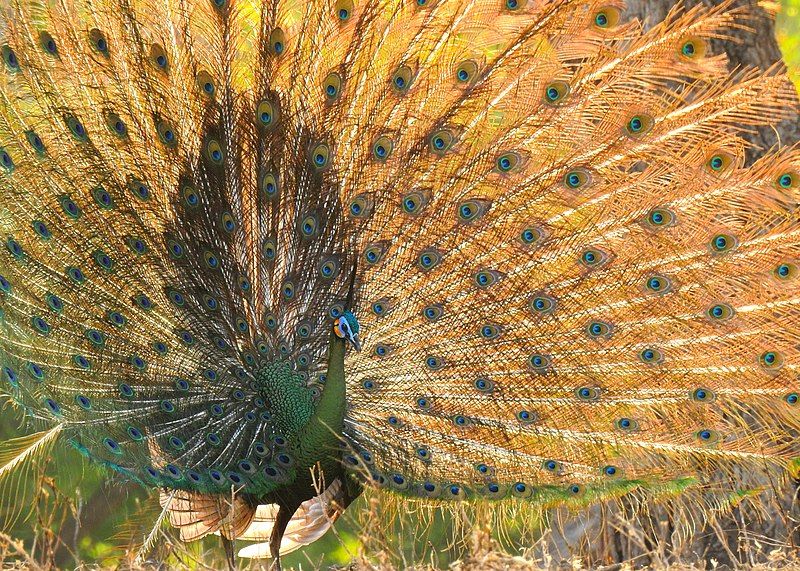
The green peafowl, also known as the Indonesian peafowl, is a species of peafowl native to the tropical forests of Southeast Asia and Indochina. It is an iconic symbol of Myanmar, having been declared as the country’s national bird.
There was once a time when the green peafowl was plentiful throughout Southeast Asia, however, over the years, its population has significantly declined and it is now confined to a few isolated pockets. These areas include Cambodia and parts of Vietnam adjacent to the border.
The green peafowl is a large bird, with males growing up to 1.2 meters in length and a wingspan of around 2 meters. Its plumage is mainly black and green, with blue neck feathers and long tail feathers, which can reach up to 1.5 meters in length.
The female is more plain in color, with a greyish-brown body, black head and neck, and a short tail. The green peafowl is an omnivorous bird, feeding on a variety of foods including insects, reptiles, fruits, and grains.
It is also known to feed on small animals, such as rodents and birds. The green peafowl is an impressive bird, usually seen strutting its stuff with fan-like tail feathers on display. Unfortunately, due to the loss of its habitat, the green peafowl is now an endangered species.
Conservation efforts are being put in place to protect this beautiful bird and its habitat.
| Kingdom | Animalia |
| Phylum | Chordata |
| Class | Aves |
| Order | Galliformes |
| Family | Phasianidae |
| Genus | Pavo |
| Species | P. muticus |
9. Chestnut-breasted Malkoha
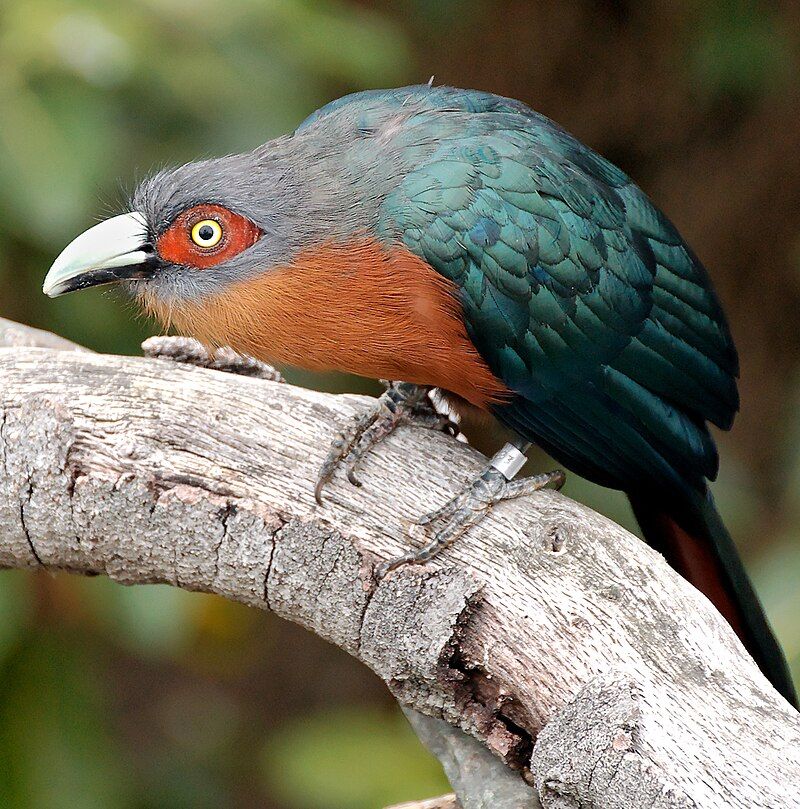
The chestnut-breasted malkoha is a beautiful species of cuckoo found in Southeast Asia. It is quite large, reaching up to 49 cm in length, with a combination of grey and dark green feathers on its upperparts, and chestnut feathers on its underparts.
The most notable feature of this bird is its large, curved upper mandible, which is pale in color. The chestnut-breasted malkoha is found in a wide range of countries in Southeast Asia, including Myanmar, Java, the Philippines, and Borneo.
It is quite a common species and can be found in a variety of habitats, from lowland forests to grasslands and cultivated areas. This species is part of the family Cuculidae, which includes other cuckoos and roadrunners.
Their diet consists mainly of insects and small fruits, which they forage for on the ground or among low foliage.
They are generally solitary birds, but can also be seen in pairs or small family groups. The chestnut-breasted malkoha is an attractive species and one that is easily recognizable due to its size and striking feather pattern.
It is an important part of the Southeast Asian ecosystem, and its presence contributes to the area’s rich biodiversity.
| Kingdom | Animalia |
| Phylum | Chordata |
| Class | Aves |
| Order | Cuculiformes |
| Family | Cuculidae |
| Genus | Phaenicophaeus |
| Species | P. curvirostris |
10. Javan woodcock
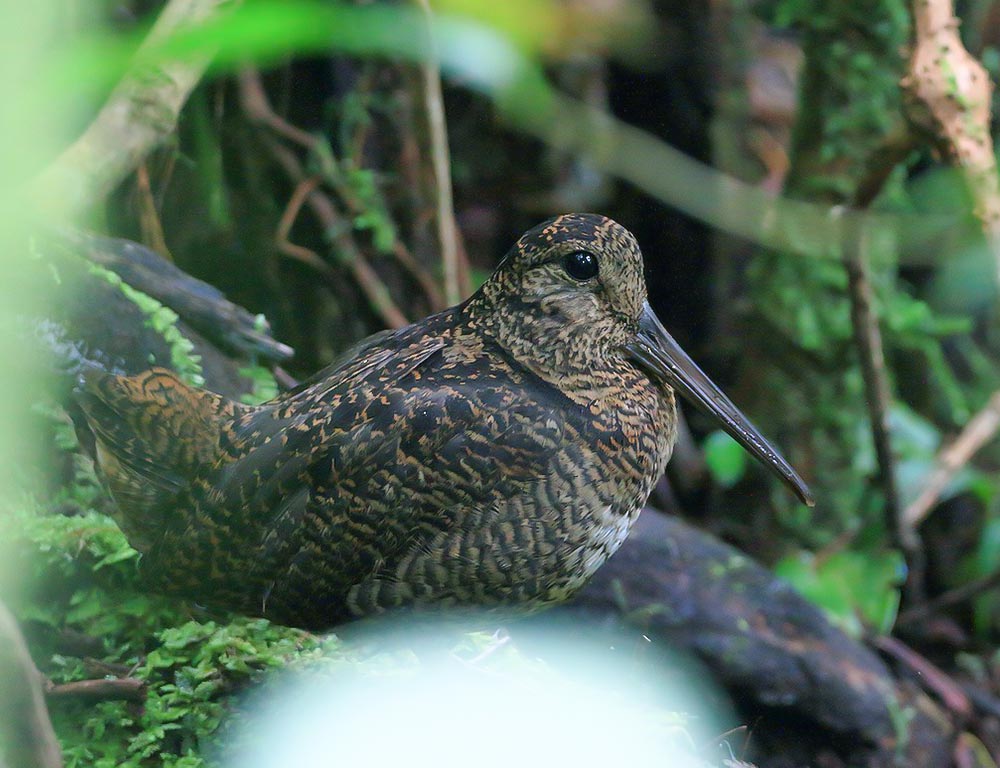
The Javan woodcock, also known as the rufous woodcock, is a type of small wader bird found mainly in wet mountain forests on Sumatra and western Java. It nests in shallow undergrowth on a bed of moss.
This bird has a unique type of display flight known as a “roding” flight that is quite similar to the Eurasian woodcock. However, the calls of the Javan woodcock are quite distinct from the Eurasian woodcock.
It is also generally smaller in size than the Eurasian woodcock and has much darker plumage. The Javan woodcock is a unique type of bird that is found mainly in two locations in the world.
It has its specific behavior and characteristics that make it stand out from other wading birds.
| Kingdom | Animalia |
| Phylum | Chordata |
| Class | Aves |
| Order | Charadriiformes |
| Family | Scolopacidae |
| Genus | Scolopax |
| Species | S. saturata |
11. Grey-breasted Partridge
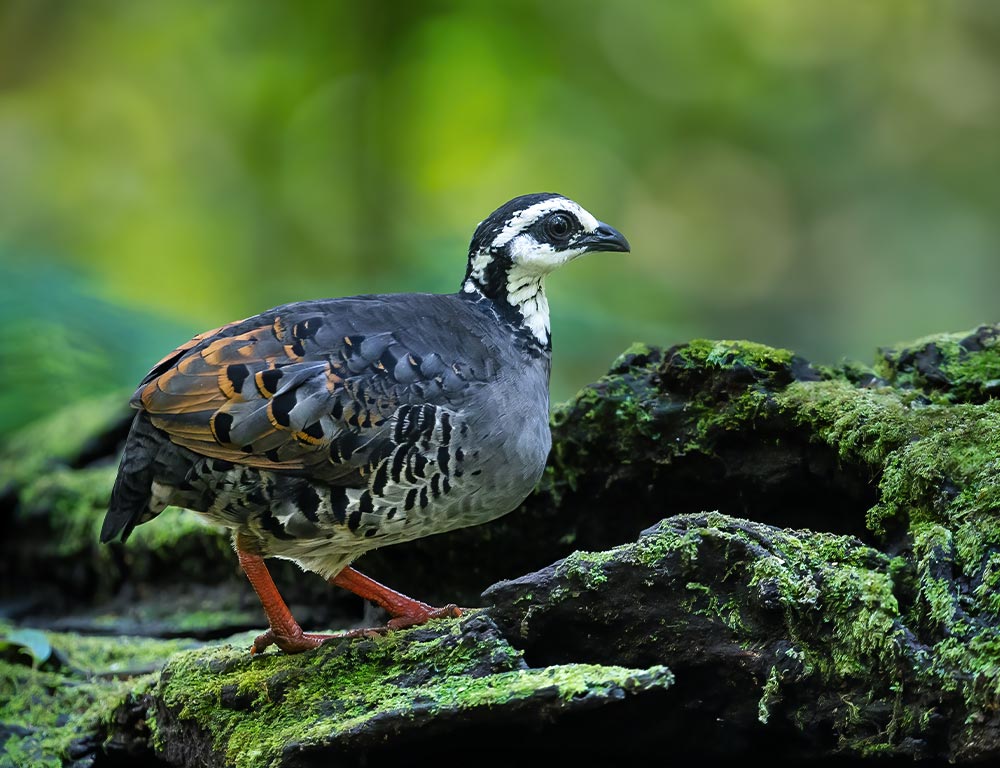
The grey-breasted partridge is a unique species of bird belonging to the Phasianidae family. It is also known by two other names- the White-faced Hill partridge and Horsfield’s Hill Partridge.
This bird is endemic to the eastern salient of Java, Indonesia, which is a highland forest. This means that it is only found in this part of the world and nowhere else.
This species of bird is not found in any other region or habitat. The physical attributes of this bird are special. It has a grey breast and a white face, which is why it has one of its names.
It also has a brownish-grey back and wings, and mottled brown and black feathers on its flanks. Its long tail is barred with black and white. The grey-breasted partridge is a solitary bird, usually seen alone or in pairs. It feeds on a wide variety of seeds, grains, and insects.
It also eats fruits and berries when it can find them. Its habitat is mainly the forests of Java, where it can find a safe and comfortable environment. This species of bird is listed as a near-threatened species by the International Union for Conservation of Nature (IUCN).
This means that it is vulnerable to becoming endangered if its habitat is disturbed or destroyed. It is important to take steps to protect and preserve this species so that it can continue to thrive in its natural environment.
| Kingdom | Animalia |
| Phylum | Chordata |
| Class | Aves |
| Order | Galliformes |
| Family | Phasianidae |
| Genus | Arborophila |
| Species | A. orientalis |
12. Sunda Teal
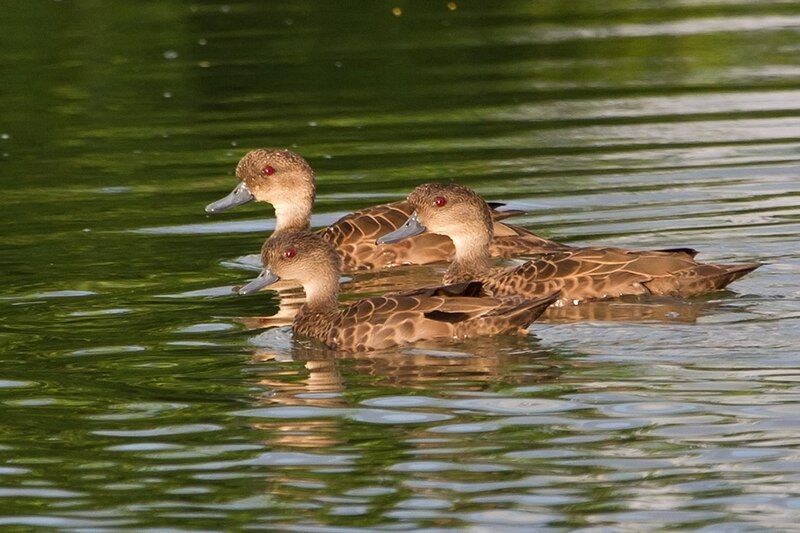
The Sunda teal is a species of dabbling duck that is found in open wetlands in Indonesia. This species is known by many different names, including the Bebek cokelat and Itik benjut.
This species was previously considered to be composed of two subspecies, the Andaman teal (Anas albogularis) and the grey teal (Anas gracilis). However, the current scientific consensus is that the Sunda teal is monotypic, meaning that it is composed of only one species.
This species is characterized by its unique mottled brown and grey coloration, as well as its distinctive brown head. The Sunda teal is an important source of food for indigenous communities in Indonesia, as its meat is highly sought-after and its eggs are often used in cooking.
The species is also an important part of the local ecology, as it helps to keep wetlands clean and healthy.
| Kingdom | Animalia |
| Phylum | Chordata |
| Class | Aves |
| Order | Anseriformes |
| Family | Anatidae |
| Genus | Anas |
| Species | A. gibberifrons |
13. Javan Bush Warbler
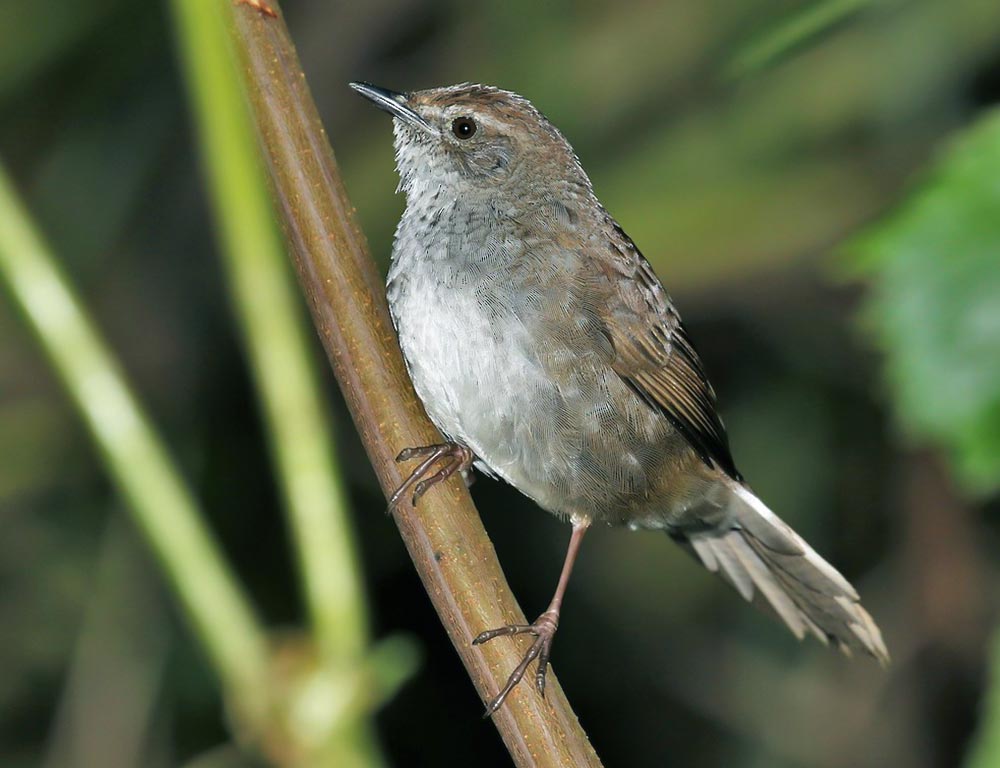
The Javan bush warbler is a species of songbird found in the mountains of eastern Java. Historically, it was classified as an “Old World warbler”, but it has since been re-categorized into a new family of birds called Locustellidae.
This new family was created and recognized due to the unique characteristics of the Javan bush warbler that set it apart from other warblers. In terms of appearance, the Javan bush warbler is a small, slender bird. It has a grey-brown upper body and whitish underparts.
Its tail is long and narrow, and it has a long bill with a slight downward curve. Its call is a loud, thin, descending trill, and its song is a soft, warbling series of notes. In terms of its habitat, the Javan bush warbler is found in the mountains of eastern Java.
It tends to prefer areas with dense vegetation such as forests, wet fields, and bamboo stands. It is usually found in the undergrowth and is rarely seen in open areas. Overall, the Javan bush warbler is an interesting and unique species of songbird.
It is an important part of the ecosystems in its native range, and its reclassification into the newly formed Locustellidae family is a testament to its distinctiveness.
| Kingdom | Animalia |
| Phylum | Chordata |
| Class | Aves |
| Order | Passeriformes |
| Family | Locustellidae |
| Genus | Locustella |
| Species | L. montis |
14. Jambu Fruit Dove
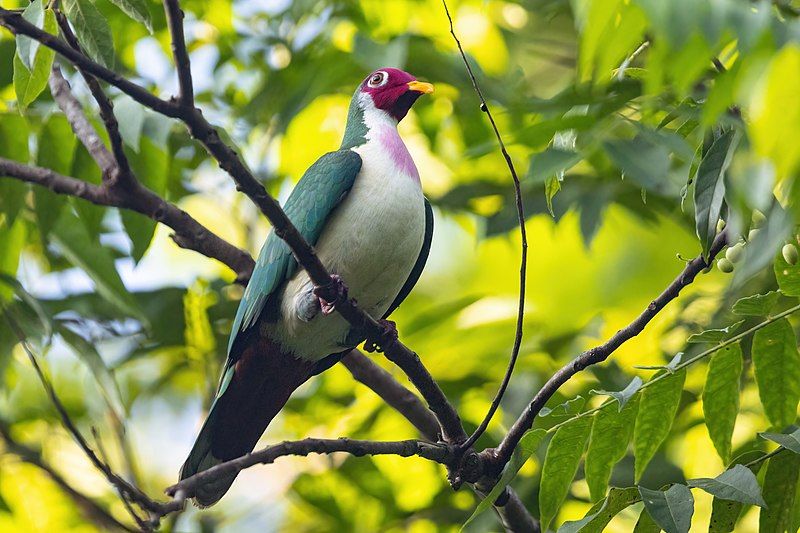
The jambu fruit dove is a species of dove that is found in Southeast Asia. It is known for its vibrant colors, with males having a purplish-blue crown and a chestnut-red underside, while the females have a more muted shade of grey-brown.
This species of dove is a resident breeding species, meaning that they stay in the same area year-round and do not migrate for breeding. It is found in southern Thailand, Malaysia, Brunei, and the Indonesian islands of Kalimantan, Sumatra, and Java.
These places provide the jambu fruit dove with an abundance of food, as they prefer to eat mainly fruit and some small insects. The jambu fruit dove is also a popular pet, particularly in Indonesia, as they are generally easy to care for and quite friendly.
They are most active during the day, so they make a great companion for people who are home during the day.
| Kingdom | Animalia |
| Phylum | Chordata |
| Class | Aves |
| Order | Columbiformes |
| Family | Columbidae |
| Genus | Ptilinopus |
| Species | P. jambu |
15. Red-breasted Parakeet
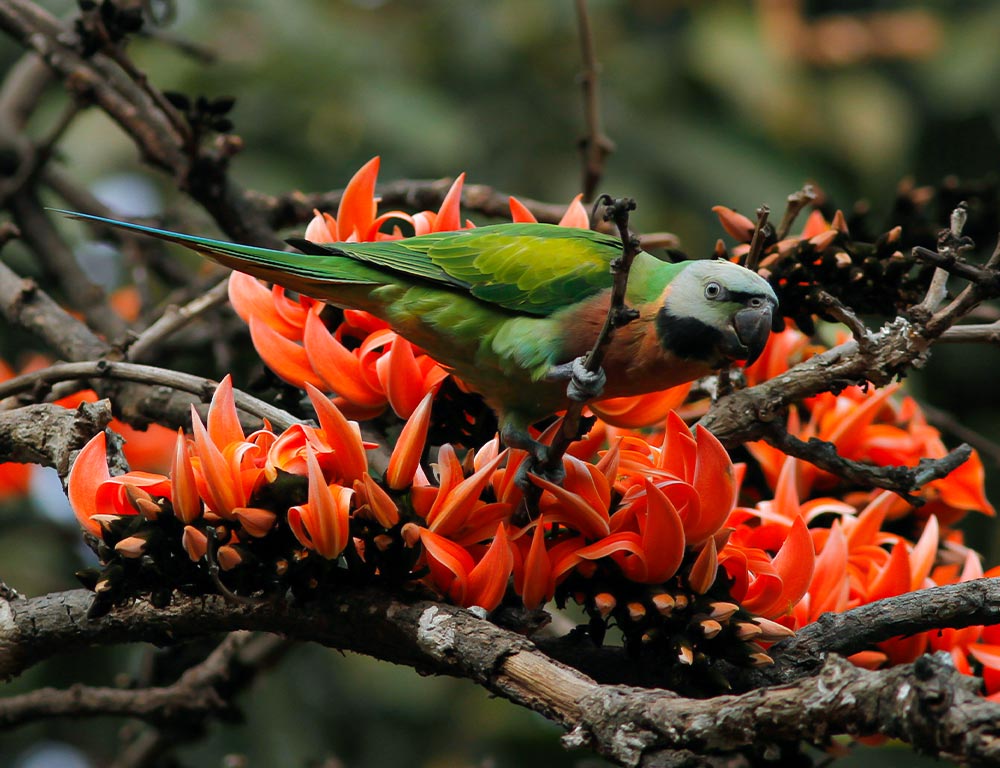
The red-breasted parakeet is a beautiful and colorful parrot natively found in the Southeast Asian region. Its scientific name is Psittacula alexandri, and it is a member of the genus Psittacula.
This bird stands out due to its large red patch on its chest, which is the main identifying factor.
It is also sometimes referred to as the mustached parakeet, depending on the subspecies. This species of parrot is quite widespread across Southeast Asia, and it is known to have many geographical variations.
The red-breasted parakeet can be found in a range of different habitats, from forests, grasslands, scrublands, and urban areas.
It can also be found in agricultural areas, which has allowed it to become a very successful species. The diet of the red-breasted parakeet consists of a variety of fruits, nuts, and seeds. They will also eat flowers, buds, and insects.
They are known to be social birds and often travel in small flocks. The red-breasted parakeet is considered to be a fairly hardy species and can easily adapt to different environments.
It is an important part of the local ecosystem, providing food for other animals and helping to spread seeds of various plants. Unfortunately, they are also popular as pets, which can lead to illegal bird trade.
However, as long as their habitats are protected, this species should remain stable for many years to come.
| Kingdom | Animalia |
| Phylum | Chordata |
| Class | Aves |
| Order | Psittaciformes |
| Family | Psittaculidae |
| Genus | Psittacula |
| Species | P. alexandri |
16. White-winged Duck
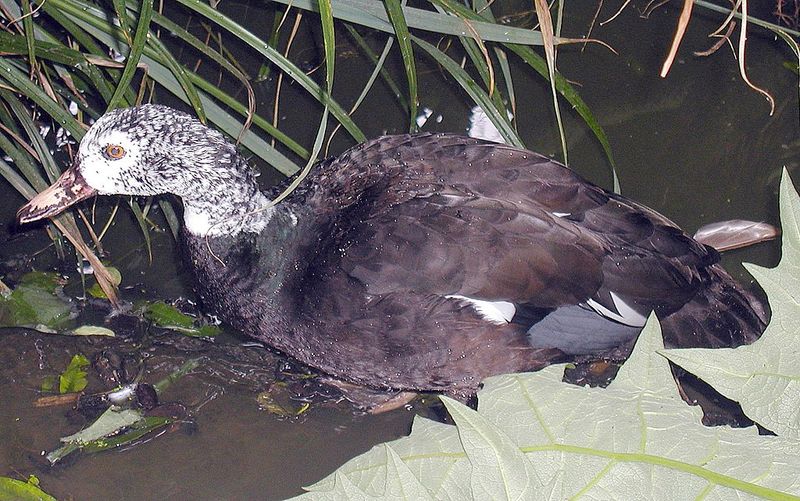
The white-winged duck, also known as the white-winged wood duck, is an impressive species of duck that has been historically placed in the genus Cairina. This genus is famously known for its Muscovy duck, which is closely related to the white-winged duck.
This species is also closely related to dabbling ducks, which are a group of duck species that feed on the surface of water by upending, dabbling, or head-dipping.
The white-winged duck is a large duck compared to many other species and has white patches on its wings which give it its name. These ducks are typically found in Central and South America, mainly in wetlands and rivers.
They are omnivorous and feed on plants, invertebrates, and even small vertebrates like frogs and fish. The white-winged duck is also known for its distinct call, which is a loud, echoing sound that can be heard from far away.
| Kingdom | Animalia |
| Phylum | Chordata |
| Class | Aves |
| Order | Anseriformes |
| Family | Anatidae |
| Genus | Asarcornis |
| Species | A. scutulata |
17. Black-winged Myna
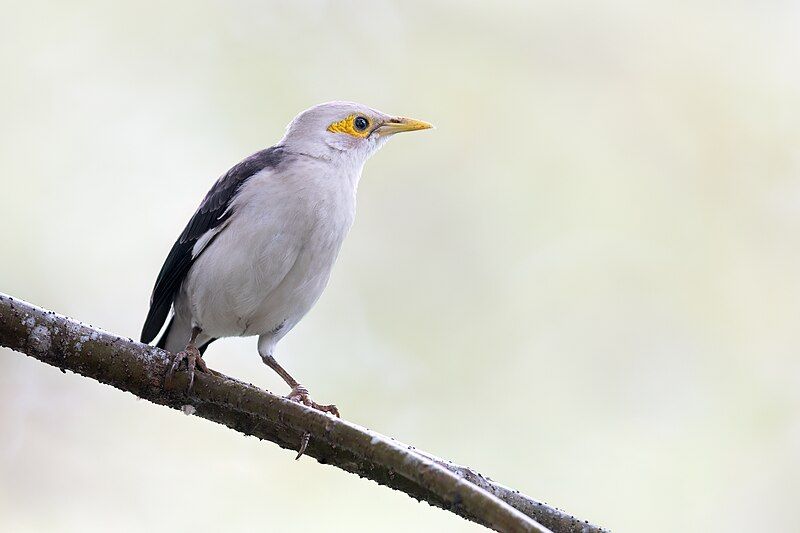
The black-winged myna is a member of the starling family, Sturnidae, and is also known by the names black-winged starling and white-breasted starling. This species of bird is indigenous to Indonesia, meaning it is not found anywhere else in the world.
The species is easily identifiable by its black wings, white breast, and gray-brown body. It is a fairly small bird, measuring around 16-18 cm in length.
The black-winged myna is a common sight in many parts of Indonesia, where it is usually found in small flocks feeding on fruits, flower buds, and insects.
They prefer open habitats such as forests, parks, and gardens, where they can find plenty of food and protection from predators. The black-winged myna is also known to be quite vocal, with its clear and melodious song being a common sound in its natural habitats.
| Kingdom | Animalia |
| Phylum | Chordata |
| Class | Aves |
| Order | Passeriformes |
| Family | Sturnidae |
| Genus | Acridotheres |
| Species | A. melanopterus |
Conclusion
Central Java is a rich area for bird watching due to its diverse habitats and species. It is home to around 400 species of birds, many of which are endemic to the region.
From the rare and endangered species to the more widespread, Central Java has something for everyone. The range of habitats, from mangroves to mountains, makes it an exciting destination for bird watching.
The area also offers great opportunities for conservation and research, ensuring the long-term survival of these species.